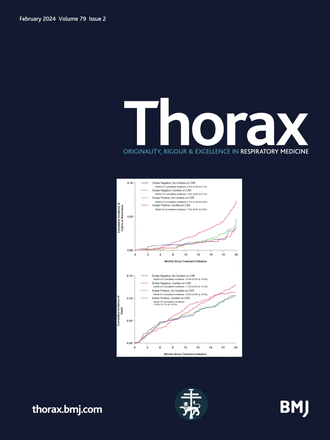Ambient formaldehyde combined with high temperature exposure and respiratory disease admissions among children: a time-series study across multiple cities
IF 9
1区 医学
Q1 RESPIRATORY SYSTEM
引用次数: 0
Abstract
Introduction Ambient formaldehyde (HCHO) is globally distributed, posing significant exposure to vast populations, particularly vulnerable demographics such as children. Investigations into the correlation between ambient HCHO exposure and children’s respiratory ailments are deficient. Methods Ambient HCHO exposure was retrieved from the TROPOspheric Monitoring Instrument. A two-stage time-series analysis was conducted to examine the relationship between HCHO exposure and hospital admission of respiratory diseases among 198 704 children in Jiangsu Province, China, from 2019 to 2021. Additionally, 12 exposure patterns were defined to further discern potential synergistic effects of HCHO and high temperature combined exposure. Results After controlling for relevant covariates, our findings revealed HCHO exposure was associated with respiratory-related hospital admissions. Specifically, we identified a pronounced effect at lag 3 day, demonstrating a 1.14% increase (95% CI: 0.60%, 1.69%). Subgroup analyses further identified that warm season, 3–7 years old group and disadvantaged economic areas showed higher admission risk. Moreover, we found HCHO combined with high temperature exposure would trigger the elevated risk of hospital admission. Notably, in specific exposure scenarios, the cumulative relative risk reached up to 1.051 (95% CI: 1.025, 1.078), highlighting the synergistic effect of combined exposure on the respiratory health of children. Conclusions Ambient HCHO exposure increased hospital admission risks for respiratory diseases in children, and high temperature could trigger the elevated risk. To have an in-depth understanding of ambient HCHO health impact is critical for intervention strategies aimed at mitigating ambient HCHO pollution and regarding adverse impacts on children under a changing climate. Data are available upon reasonable request.环境甲醛与高温暴露和儿童呼吸道疾病入院:一项跨多个城市的时间序列研究
环境甲醛(HCHO)在全球范围内分布,对大量人口,特别是儿童等弱势人口构成了严重的暴露。对环境HCHO暴露与儿童呼吸系统疾病之间关系的调查缺乏。方法利用对流层监测仪获取环境HCHO暴露量。采用两阶段时间序列分析方法,研究了2019 - 2021年江苏省198704名儿童HCHO暴露与呼吸道疾病住院之间的关系。此外,我们还定义了12种暴露模式,以进一步了解HCHO和高温联合暴露的潜在协同效应。结果在控制相关协变量后,我们的研究结果显示HCHO暴露与呼吸相关的住院率相关。具体来说,我们在3天后发现了明显的影响,显示出1.14%的增加(95% CI: 0.60%, 1.69%)。亚组分析进一步发现,暖季、3 ~ 7岁儿童和经济条件较差地区住院风险较高。此外,我们发现HCHO合并高温暴露会导致住院风险升高。值得注意的是,在特定暴露情景中,累积相对风险高达1.051 (95% CI: 1.025, 1.078),突出了联合暴露对儿童呼吸健康的协同效应。结论环境HCHO暴露增加了儿童呼吸道疾病住院风险,高温可引起风险升高。深入了解环境HCHO对健康的影响,对于旨在减轻环境HCHO污染以及气候变化对儿童的不利影响的干预战略至关重要。如有合理要求,可提供资料。
本文章由计算机程序翻译,如有差异,请以英文原文为准。
求助全文
约1分钟内获得全文
求助全文
来源期刊

Thorax
医学-呼吸系统
CiteScore
16.10
自引率
2.00%
发文量
197
审稿时长
1 months
期刊介绍:
Thorax stands as one of the premier respiratory medicine journals globally, featuring clinical and experimental research articles spanning respiratory medicine, pediatrics, immunology, pharmacology, pathology, and surgery. The journal's mission is to publish noteworthy advancements in scientific understanding that are poised to influence clinical practice significantly. This encompasses articles delving into basic and translational mechanisms applicable to clinical material, covering areas such as cell and molecular biology, genetics, epidemiology, and immunology.
 求助内容:
求助内容: 应助结果提醒方式:
应助结果提醒方式:


